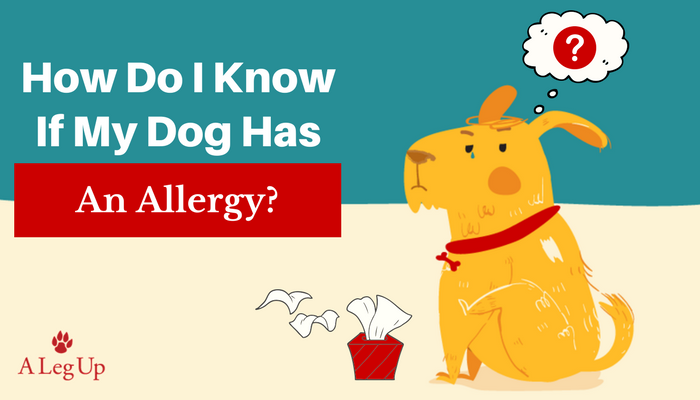
If you've ever suffered from allergies, you know just how miserable they can make you feel.
The runny eyes, the sniffles, the itchy skin...yuck!
You wouldn't wish that feeling on anyone. Especially not your furry friend...
But sadly, our pups are just as prone to suffer from allergies as we are. This means that as dog parents, it's our responsibility to know how to identify the signs of an allergic reaction, and to know what do to prevent them from happening!
Here are some useful information and some handy tips.
Common Symptoms
In both dogs and human, allergies are the result of an overactive immune system.
While these systems normally protect us from actual threats such as bacteria and viruses, allergic reactions occur when the immune system mistakes non-harmful environmental substances (allergens) as threats to the body.
These allergens can be inhaled or ingested, or may simply come in contact with a dog’s skin. Depending on how the pup comes into contact with the allergen, a variety of skin, digestive, and respiratory symptoms can occur.
Here are some signs you should keep an eye out for:
- Increased scratching
- Itchy, runny eyes
- Itchy back or base of tail
- Sneezing
- Vomiting
- Diarrhea
- Paw chewing
- Swollen paws
- Constant licking
- Coughing or sneezing
- Nasal discharge
- Hair loss, scabs or crusts on the skin.
Types Of Allergies
The symptoms will depend on the type of allergy your dog is suffering from.
Flea Allergy Dermatitis (FAD)
Flea Allergy Dermatitis is a common ailment in dogs. It stems from a sensitivity to flea saliva and results in skin irritation that can make your dog feel miserable.
There are lots of flea preventatives and treatments that can help prevent FAD. If your dog suffers from it, the best thing to do is to use these treatments and comb your dog for fleas regularly during peak flea season.
Environment Allergens
Environment allergens are much harder to prevent. That's because there are so many of them, and your dog's exposure to them may be out of your control.
These are some of the most common ones:
- Tree, grass, and weed pollen
- Mold spores
- Dust and house dust mites
- Feathers
- Cigarette smoke
- Prescription drugs
- Perfumes
- Cleaning products
Figuring out the exact cause of the allergy is important if you want to prevent it.
A good way to start doing this is by paying close attention to you dog. If he or she is allergic to something inside your house, he’ll have symptoms all year long. Outdoor allergies tend to be more seasonal.
If it turns out your dog has an environmental allergy, you’ll want to do everything you can to reduce that allergen inside your home. This may include:
- Washing their bedding and vacuuming our house every week to prevent dust from gathering,
- Bathing them weekly to help remove environmental allergens and pollen from their fur or skin
- Use a gentle dog shampoo
- Switching to non-toxic cleaning products
- Investing in an air purifier to control dust mites,
- Not smoking around your dog.
Food Allergies
Dogs can develop food allergies at any point in their life.
Vomiting, diarrhea and constant itching are all signs that your dog may have developed a food allergy.
If this is the case, visit your vet. They'll most likely prescribe a 12 week hydrolyzed protein diet to figure out the cause of the food allergy and come up with an appropriate course of action for your dogs diet.
Dogs with food allergies typically respond best to homemade or raw diets once the allergen has been discovered.
What to do with this information?
Here are three things you can do right now to know if your dog has an allergy.
- Keep an eye out for symptoms: Keeping an eye out for symptoms is extremely important. Knowing what symptoms are being exhibited is the best way to understand what kind of allergy your dog may have and figure out what to do next.
- Change certain behaviours: Once you have identified that your dog is allergic to something, assess the degree of their reaction. There's a chance that all you'll have to do is change certain behaviours to make your furry friend more comfortable.
- See your vet: Sometimes you can't completely remove an allergen from your dog's life. If that is the case, it may be time to talk to your vet about other treatment options. A vet may be able to prescribe medication that reduces the symptoms of the allergy while also addressing it's root cause.
|